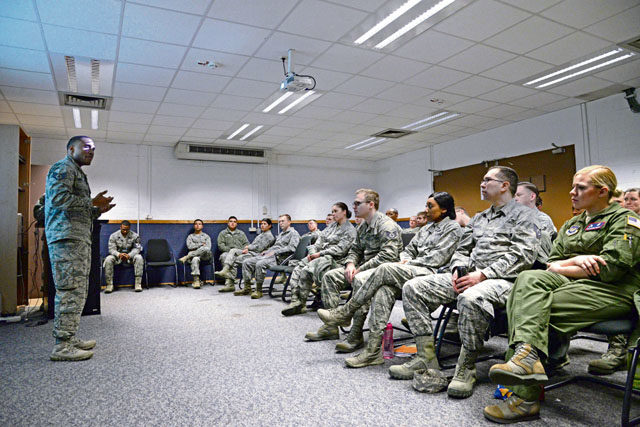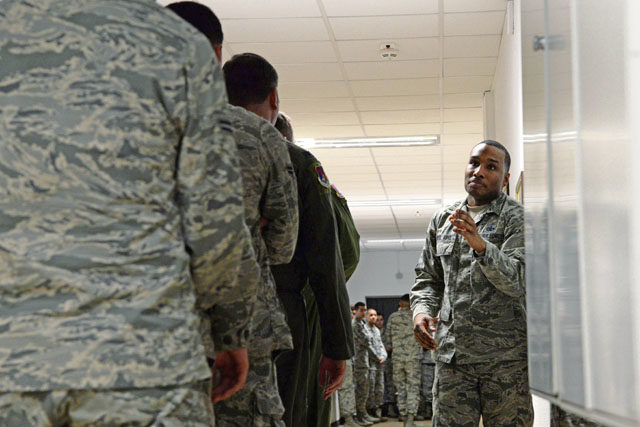
While many people look at extreme situations and think to themselves, “It could never happen to me,” they run the risk of allowing those same unfortunate circumstances to occur.
Staff Sgt. Karriem Abdulahad, 86th Security Forces Squadron training instructor, teaches his students what to do if they ever face a situation involving an active shooter like he did years ago.
“Before I joined the military, there was a situation at my job,” Abdulahad said. “There was a real-world active-shooter situation where this material could have worked.”
The Expeditionary Active Shooter Training course is predeployment-focused material that is practical enough to use every day. The course trains Airmen how to react if they ever find themselves in an active-shooter situation.
“It’s very beneficial being in that situation and now doing what I do,” Abdulahad said. “I can actually help avoid a mass casualty scenario.”
High stress coupled with the improbability of active-shooter situations are two of the most dangerous factors facing the victims involved with the event. At any moment, not knowing what to do could cost someone their life.
“An individual came into the place where I was working at the time,” Abdulahad said. “He went up to the mother of his child, and he requested the child. At that time, the child was in a swim class, and the way the building was set up, there was a window facing the pool where spectators could see all of the kids. When the mother refused the father access to the child, the individual began to get loud and started an argument. Eventually, my boss came out in an effort to diffuse the situation. They began speaking lower, but within the next three minutes, I heard a gunshot.”
With lives on the line, a moment of hesitation could have devastating effects.
“With active shooters, because they are so random and so unexpected, it’s one of those things where you have to know what to do,” Abdulahad said.
In high-stress situations the typical physical reactions are flight, fight or freeze, the most dangerous being the latter.
“There was something slightly in place for active-shooter situations but it wasn’t anything we practiced,” Abdulahad said. “With that being said, the instructors and swim coaches did something. They got the kids out of the pool, and they went out of the escape route.”
In the wake of events like these, the only thing that can be done is to learn, grow and prevent incidences like this from occurring ever again.
“My hope at the end of the day is that you learn,” Abdulahad said. “You learn and really take into consideration the things that can happen, because they can happen.”



